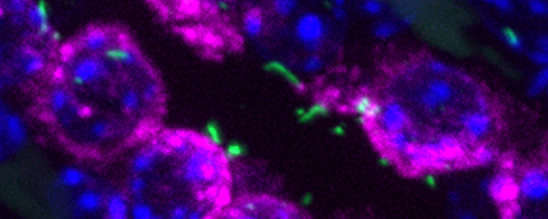CEP290
C57BL/6NTac-Cep290em1H/H contains a disease-associated point mutation created using CRISPR/Cas9 gene editing reagents delivered by pronuclear injection into 1-cell stage embryos.

Testing genetic therapies for complex disorders
CEP290 is a centrosomal protein that is required for formation of cilia, the small microtubule-based organelles extending from the surface of most eukaryotic cells. Cilia are important for many diverse processes, including cell signalling, sensory perception, cell motility, and extracellular fluid movement. This means that their dysfunction can result in complex disorders that affect many different organ systems.
CEP290 is the most frequently mutated gene associated with these kinds of complex diseases, known as ciliopathies, and is associated with Leber congenital amaurosis, Senior Løken syndrome, Meckel Gruber syndrome, Bardet Biedl syndrome, and Joubert syndrome. Indeed, mutations in CEP290 are the single most important cause of Joubert syndrome. As with other ciliopathies, Joubert syndrome affects multiple systems, including the retina, brain and kidneys, and currently has no cure; treatment of symptoms is the only option. Typically the disorder progresses to kidney failure within the first two decades of life.
One potential method for treatment of these disorders might be to negate the causative genetic lesion by targeted exon skipping. This strategy works through the use of an antisense oligonucleotide designed to block access of splice factors to a specific exon–intron boundary in order to prevent inclusion of the target exon containing the disease-associated mutation. This system could be useful against CEP290 mutations because most of the encoded protein consists of repeated coiled-coil domains, each of which is often encoded by a single exon, and the protein product is very large, meaning that loss of a single exon can still produce a near full-length protein, with the likelihood that the protein will remain functional.
In testing this, John Sayer’s group at the University of Newcastle recently demonstrated the rescue of a wildtype phenotype after targeted exon skipping in primary cells derived from a patient with Joubert syndrome caused by the commonly reported nonsense mutation G1890*. By skipping exon 41, where the causative mutation is found, they demonstrated a near full-length transcript and restoration of protein expression levels, as well as rescue of ciliary length defects.
With the widespread effects of ciliopathies in multiple organ systems, these diseases are better modelled in whole animals than by ex vivo cell culture, so John applied to the GEMM programme to generate a mouse carrying the murine equivalent to the G1890* mutation. This will allow investigation of whether treatment with antisense oligonucleotides to direct exon skipping can rescue wider disease phenotypes and will require development of delivery and dosing regimes that allow the oligonucleotides to reach the target renal tissues. In the future, this model could also allow testing of other gene-therapy strategies and help us better understand the complex question of how different mutations in CEP290 can cause different syndromes.
This line and all others generated through the GEMM programme are available through the National Mouse Archive, here at MRC Harwell, and through the European Mouse Mutant Archive (EMMA).